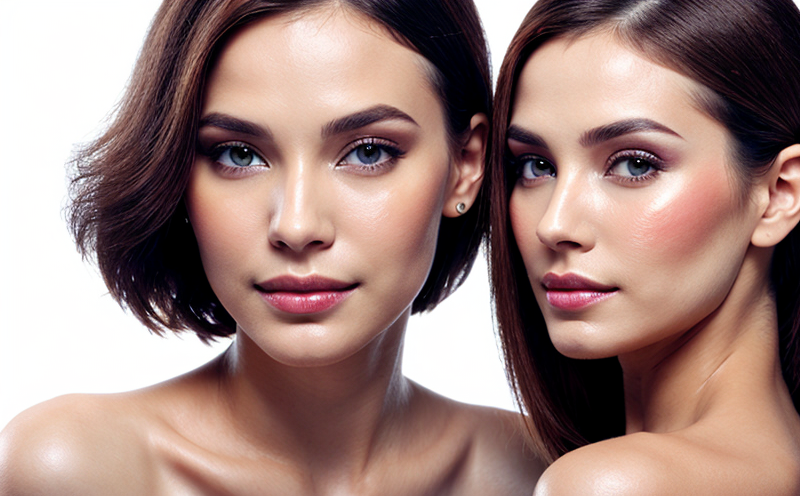Sensory Evaluation of Sunscreen Texture on Skin
The sensory evaluation of sunscreen texture on skin is a critical aspect in the cosmetic industry, as it directly influences consumer satisfaction and overall product performance. This service involves assessing the physical properties of sunscreen formulations that come into contact with human skin. The primary focus is on evaluating how sunscreens feel when applied (spreadability, slipperiness) and how they behave after application (texture, consistency). Proper sensory evaluation ensures that the formulated texture meets both regulatory requirements and consumer expectations.
The process typically begins with selecting a group of evaluators who represent a cross-section of potential consumers. These evaluators undergo training to ensure consistent assessment methods across all tests. The sunscreen samples are then applied according to standard protocols, which may include varying application amounts or layering techniques. Evaluators assess the texture using their senses—touch, sight, and sometimes even taste (for certain evaluations)—to determine how the product feels on skin.
Instrumentation can enhance this process by providing additional data points such as friction coefficients measured by tribometers or visual analysis through spectroscopic instruments. However, the core of sensory evaluation remains qualitative rather than quantitative, relying heavily on human perception and experience.
The acceptance criteria for these evaluations vary based on intended use, regulatory compliance, and brand-specific standards. For instance, sunscreens marketed as 'water-resistant' must adhere to specific performance metrics which might include water resistance tests under standardized conditions (ISO 21778). Similarly, products claiming ‘quick drying’ or ‘non-greasy’ should demonstrate these attributes through sensory evaluations that simulate real-world usage scenarios.
This service is essential for several reasons. Firstly, it helps identify potential issues early in the development cycle—such as uneven application which could lead to ineffective protection against UV rays. Secondly, it aids in refining formulas so they better meet consumer preferences without compromising efficacy. Lastly, sensory evaluation plays a crucial role during regulatory submissions where agencies like the FDA or EU Cosmetics Regulation require detailed documentation of product characteristics including texture.
The benefits extend beyond just meeting compliance requirements; they contribute significantly to enhancing brand reputation by delivering superior user experience and satisfaction levels. By investing in thorough sensory evaluations early on, manufacturers can avoid costly rework later in production processes while also gaining competitive advantage through more appealing products that resonate well with target demographics.
Benefits
Sensory evaluation of sunscreen texture offers numerous advantages for cosmetic companies and their partners. One key benefit is improved product quality, which translates into higher customer satisfaction rates and increased brand loyalty. When consumers experience a positive sensory impression—whether it's the feel of the sunscreen on their skin or its appearance—they are more likely to purchase again.
- Enhanced Consumer Experience: Providing customers with a pleasant sensation when applying sunscreens not only makes them happier but also encourages repeat purchases. Satisfied clients tend to recommend products positively, which can significantly boost brand image and sales figures.
- Increased Compliance: Adherence to international standards ensures that your product meets all necessary regulatory requirements, reducing risks associated with non-compliance penalties or recalls.
- Innovation Opportunities: By continuously evaluating and improving the sensory aspects of sunscreens, companies can stay ahead in innovation, leading to unique offerings that differentiate them from competitors. This proactive approach fosters creativity within teams and opens doors for new ideas and improvements.
Additionally, sensory evaluation helps refine products during development stages, ensuring they perform well under various conditions such as different climates or activities. This attention to detail ensures consistency across markets, enhancing overall product reliability.
Why Choose This Test
- Precision: Our team uses advanced techniques and equipment to ensure accurate measurements of sunscreen textures. From friction coefficients measured by tribometers to visual analysis via spectroscopic instruments, we provide detailed insights into the physical properties of sunscreens.
- Expertise: Leveraging years of experience in cosmetic science allows us to offer unparalleled expertise when it comes to sensory evaluation services. Our evaluators are trained professionals who understand both technical aspects and consumer preferences.
- Comprehensive Coverage: We cover a wide range of sunscreen types, from traditional lotions to innovative gels or sprays. Whether you’re developing new formulations or refining existing ones, we have the expertise needed for thorough evaluation.
The sensory evaluation process is designed to be as comprehensive and objective as possible. It involves multiple stages where samples are tested in controlled environments simulating real-world conditions. This approach guarantees that every aspect of the sunscreen texture is thoroughly examined before finalizing any recommendations or conclusions.
By choosing our service, you gain access to a wealth of knowledge and resources dedicated solely towards ensuring your sunscreens deliver optimal sensory experiences while maintaining high standards of safety and efficacy.
Competitive Advantage and Market Impact
The importance of sensory evaluation cannot be overstated, especially in the competitive world of cosmetics. Consumers today expect more than just functional products—they want pleasant experiences that make them feel good about their choices.
- Differentiation: In a crowded market, offering superior sensory experiences can set your product apart from others. If competitors offer similar protection levels but inferior textures, your superior formulation could capture larger market shares.
- Customer Retention: Happy customers are more likely to become repeat buyers and advocates for your brand. Positive sensory feedback translates into loyal customer bases who will continue purchasing your products over time.
Achieving excellence in sensory evaluation also contributes positively to the market as a whole by driving innovation forward. As standards evolve, so too do product offerings, creating exciting new trends that keep consumers engaged and excited about future developments in skincare technology.
Our service plays an integral role in this process by continuously pushing boundaries of what’s possible within sunscreen formulations. By staying ahead of trends and incorporating cutting-edge methods into our evaluations, we help propel the entire industry towards higher standards of excellence.





